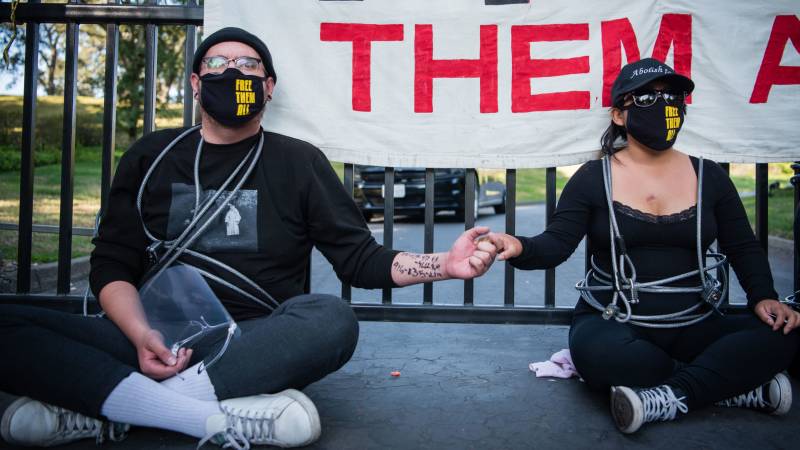Beaty said they were denied food and water for more than 12 hours and several in the group felt sick.
“My toilet in a tiny cell I was in was clogged with food when I arrived,” Beaty said. They used the toilet to vomit in and notified an official when it was clogged. “She told me to reach into the toilet and unclog it with my hand,” Beaty said.
Another immigration lawyer said she had a fever at the time of booking. Jail staff took her temperature and the thermometer showed she had a fever. Afterward, the staff made her drink cold water, lowering her temperature, she said. They took her temperature again and it was normal. Immigration attorneys say this is the same tactic U.S. Immigration and Customs Enforcement officers have used in other facilities.
Juan Prieto, an undocumented organizer with the Oakland-based California Immigrant Youth Justice Alliance said, “I was standing behind her,” and verified that staff took her temperature multiple times.
The conditions the group experienced were precisely what they had come to Newsom’s house to protest against. Prieto said he had met with representatives from the governor’s office once before in March to alert Newsom to the unsafe conditions in jails and prisons.
“We were trying to make sure he took action immediately. All of us who had been in conversation with people in these facilities,” Prieto said. With outbreaks in both prisons and immigration detention centers escalating, the situation has only more gotten dire.
Prieto said the fear among those incarcerated in ICE facilities, as well as state jails, has led to waves of hunger strikes and work stoppages. In May, ICE reported that an immigrant detained in one of its facilities died of COVID-19.
Many of the lawyers and organizers have been writing letters and calling on elected officials to release those incarcerated and to address unsafe conditions since the beginning of the pandemic.
All of that led to Thursday’s protest. “We needed to bring these demands to his [Newsom’s] house,” Prieto said. “Trying to avoid contracting COVID-19 while incarcerated is impossible unless we take drastic steps.”
KQED reached out to Gov. Newsom’s office and the Sacramento County Jail for comment but didn’t receive a response by publication.
